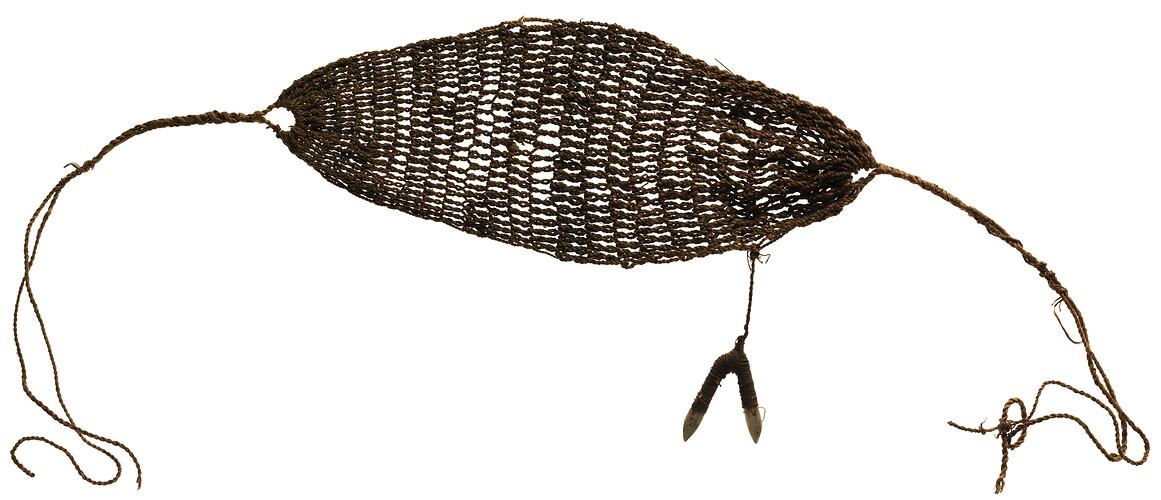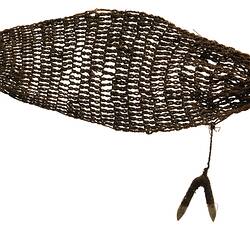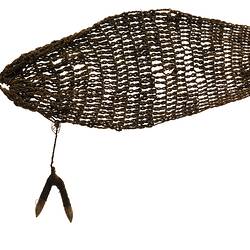Summary
Both men and women wore the mullar-karwyne across the forehead, with the leaangerra (kangaroo teeth) hanging down near the wearer's temples. The leaangerra were attached with sinew from the tail of a kangaroo. The sinew was chewed until it was pliant enough to wrap around the teeth to the secure them.
Local Name
Mullar-karwyne
Physical Description
Forehead band, short and broad of netted string with kangaroo teeth ornament attached.
Significance
The style of string-work is called Moolongnyeerd, created from the root system of Cumbungie, a river plant.
Yorta Yorta/Ngarrindjeri/Wathaurong Elder Uncle David Tournier shares his knowledge of some of the processes used to manufacture string for weaving cultural items such as the mullar-karwyne:
'That root system was collected, it was cleaned and then it was boiled, cooked in the ashes or roasted, whichever, or you could eat it raw. November, if you want to eat it raw, was the best time to have it because it was nice and sweet. But you don't swallow the fibres because you'd choke. So you'd just chew, chew, chew. It was like a chewie. But the actual flavour, though, is exactly the same as potato that you have today. It's good; it's all the starch and it leaves a nice flavour. You'd spit the fibres out and the women would come around later, after everyone had had some. They'd collect these fibres, wash them and then proceed to spin it on their legs to make string.' - Uncle David Tournier, 2012.
In honour of Uncle David Tournier 1955-2016. Esteemed Elder, Yulendj Member and Honorary Associate of Museums Victoria.
References
Bunjilaka profiles, David Tournier, 2012, Viewed 14 August 2017.
https://museumvictoria.com.au/bunjilaka/visiting/first-peoples/yulendj/biographies/david-tournier/
More Information
-
Object/Medium
Ornament, head
-
Maker
-
Locality
-
Date Produced
-
Object Measurements
500 mm (Length), 200 mm (Width), 25 mm (Height)
-
Classification
-
Date Made
-
Maker
-
Clan/Language Group
-
Place Made
-
Indigenous Region
-
Keywords
-
Type of item
-
Discipline
-
Category
-
Collecting Areas


